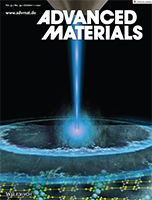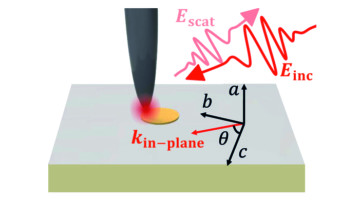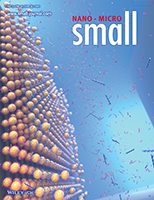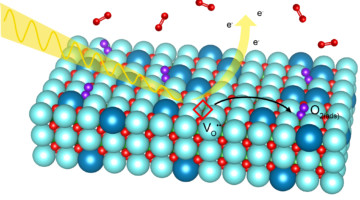The cooperative tuning of a supramolecular electronic crystal enables access to a long-lived hidden conducting phase with a broad temperature range. Researchers demonstrate a dynamic and cooperative phase in K-TCNQ, with the control of pulsed electromagnetic excitation. A dedicated charge–spin–lattice decoupling is required to activate and subsequently stabilize the non-equilibrium phase. Read more »
A Two-Dimensional Room-Temperature Magnet
Researchers have made the world’s thinnest (one atom thick) magnet that’s chemically stable under ambient conditions. The two-dimensional material, magnetically characterized at the ALS, could enable big advances in next-generation memory devices, computing, spintronics, and quantum physics. Read more »![]()
![]()
A Powerful Infrared Technique Broadens Its Horizons
Scattering-type scanning near-field optical microscopy (s-SNOM) focuses infrared light to dimensions below the diffraction limit, measuring properties with components perpendicular to the sample surface. Researchers have now devised a way to probe components parallel to the sample, where the technique has been less sensitive. Read more »
This Exotic Particle Had an Out-of-Body Experience; These Scientists Took a Picture of It
Scientists have taken the clearest picture yet of electronic particles that make up a mysterious magnetic state called a quantum spin liquid (QSL), in which electrons decompose into spin-like particles (spinons) and charge-like particles (chargons). The achievement could facilitate the development of superfast quantum computers and energy-efficient superconductors. Read more »
Extreme Ultraviolet Second Harmonic Generation Spectroscopy in a Polar Metal
Berger et al. utilize extreme ultraviolet, second-harmonic generation (XUV-SHG) spectroscopy to investigate the polar metal phase of lithium osmate (LiOsO3), where the coexistence of polarity and metallicity is unexpected. As the first demonstration of XUV-SHG spectroscopy around a phase transition, these results pave the way for using nonlinear XUV methods to investigate broken symmetry from an element-specific perspective. Read more »
Main Attraction: Scientists Create World’s Thinnest Magnet
A one-atom-thin 2D magnet that operates at room temperature could lead to new applications in computing and electronics—such as high-density, compact spintronic memory devices—and new tools for the study of quantum physics. X-ray experiments at the ALS characterized the material’s magnetic parameters under high temperature. Read more »
Tuning Semimetallicity Using Thin Films and Interfaces
With support from ALS data, scientists gained new insight into a semimetal’s unusual electronic behavior. The work lays out a basic strategy for engineering the band structures of semimetallic compounds using dimensional confinement and reveals a new way of creating two-dimensional electron/hole gases by exploiting interfacial bonding. Read more »![]()
![]()
Rapid In Situ Ligand-Exchange Process Used to Prepare 3D PbSe Nanocrystal Superlattice Infrared Photodetectors
A new strategy for retaining long-range order during ligand exchange of nanocrystal superlattices is used to construct PbSe infrared photodetectors. The ordered photodetectors have a 16× higher responsivity and 2× faster response time compared to disordered ones. Read more »
Label-Free Characterization of Organic Nanocarriers
A technique developed at the ALS enables accurate characterization of organic nanocarriers (molecules that encapsulate other molecules) without the need for disruptive labeling. The method will enable faster, more precise development of exciting new technologies, ranging from targeted drug delivery to oil-spill remediation. Read more »![]()
![]()
Scientists Uncover a Different Facet of Fuel-Cell Chemistry
Solid oxide fuel cells are a promising technology for cleanly converting chemical energy to electrical energy. To improve the efficiency of these devices, researchers studied a model electrode material in a new way—by exposing a different facet of its crystal structure to oxygen gas at operating pressures and temperatures. Read more »
- « Previous Page
- 1
- …
- 7
- 8
- 9
- 10
- 11
- …
- 26
- Next Page »









